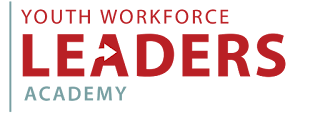 This week’s blog is a look ahead to the 2nd Annual Homeless Youth Census, set to take place District-wide from September 16-24, 2016.
This week’s blog is a look ahead to the 2nd Annual Homeless Youth Census, set to take place District-wide from September 16-24, 2016.
We reached out to our friends at the Community Partnership for the Prevention of Homelessness (TCP) to help respond to some frequently asked questions about the census: what it is, who is counted, and what is its impact.
What is the Homeless Youth Census?
In May 2014, the DC Council passed the End Youth Homelessness Amendment Act, funding an expansion of accessible youth-friendly services. The Act also mandated an annual census of District youth experiencing homelessness to address the lack of consistent and reliable data. The Homeless Youth Census (HYC) is an annual count and survey of unaccompanied minors and transition-aged youth experiencing or at risk of experiencing homelessness or housing insecurity.
The first census was conducted by the Department of Human Services (DHS) in close collaboration with TCP over a nine day period at the end of August 2015. The census revealed there were some 545 unaccompanied youth experiencing homelessness in the District of Columbia – almost half of whom identified as LGBTQ. This marked the first time that we have had such a thorough estimate of youth who are homeless (and particularly those identifying as LGBTQ) and the importance of having this knowledge cannot be overstated: it has implications for expanding services, targeting outreach and fine-tuning supportive services.
How Does Doing a Census Help End Youth Homelessness?
During the Council’s performance oversight hearing for DHS last February, DCAYA testified that the agency and community partners were on track in their expansion of services to youth, but that continued progress was going to require added investment in the coming fiscal year.
Because of the availability of data from the HYC, advocates had a strong case to make at the DHS budget hearing in April for scaling up prevention services, as well as adding to the supply of crisis beds and transitional and independent living spaces for youth. The Council and the Bowser administration committed $2.3 million in the FY2017 budget in new investments for these services. This represented a significant increase over previous years and one which can largely be attributed to the use of census data.
Conducting the census on an annual basis enables the District to track data and trends over time^, which can shed light on the interventions and support needed to stem the tide of youth homelessness. The census process and its results strengthen advocacy efforts to annually secure the public funding necessary to reach the District-wide goal of ensuring homelessness among unaccompanied minors and transition-aged youth is rare, brief and non-recurring by 2020.
Who is Counted?
Through surveys conducted by street outreach professionals, in drop-in centers and meal programs, and though other community partnerships, the HYC collects information about demographics, housing and homelessness status, education and employment status, health and well-being, and system involvement (e.g., child welfare, juvenile justice) across the following youth populations:
- Unaccompanied Minors (under the age of 18) living apart from their parents or guardians, excluding those in the physical custody of the District
- Transition-Aged Youth (age 18-24) who are “economically and emotionally detached from their parents and who are unstably housed”
- “Literally Homeless” Youth who are residing on the street or in emergency shelter and transitional housing situations
- “Housing Insecure” Youth who are residing in non-permanent housing situations, including “couch-surfing” and “doubled up”, which are often identified as risk factors for experiencing literal homelessness
- Subpopulation Information is also captured (e.g., pregnant and parenting, gender expression, sexual orientation) to better understand population trends.
Of fundamental importance, the results of the census show us that at any given time there are hundreds of youth moving from couch to couch, and when their options run short, shelter to shelter.
How Can I Help?
The HYC equips youth, advocates and service providers with vital knowledge about youth in crisis. Each new community partnership helps to expand that knowledge and work toward ending the crisis.
The 2nd Annual HYC is set to take place District-wide September 16-24, 2016:
- To sign up as a community partner, please contact Eileen Kroszner, Program Officer, at the Community Partnership for the Prevention of Homelessness: EKroszner@community-partnership.org or 202-543-5298
- For HYC survey sites and more information, including how you can be counted if you are a youth experiencing homelessness, please visit www.youthcountdc.org.
_____________________________
^ track data and trends over time: For example, HYC survey data help to identify patterns in responses and factors which affect how youth experience homelessness, including special subpopulations (i.e., LGBTQ Youth, Mental Health, Justice System involvement); to identify patterns in responses describing services used and gaps in services; and, quantify and qualify the scope of minor and young adult homelessness to guide resource decision-making.












